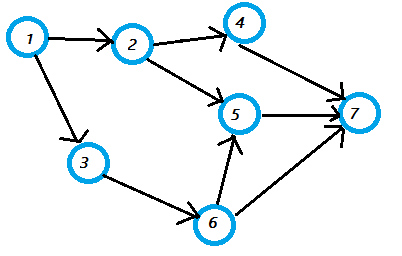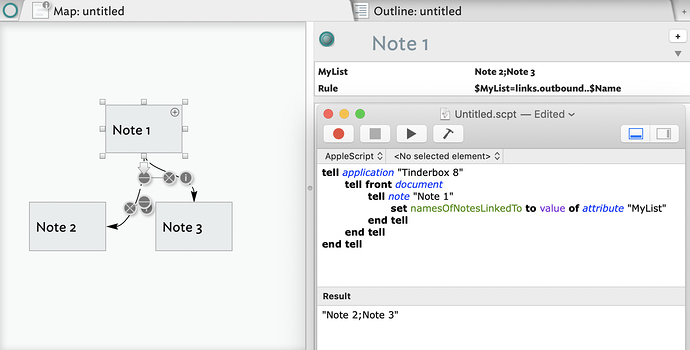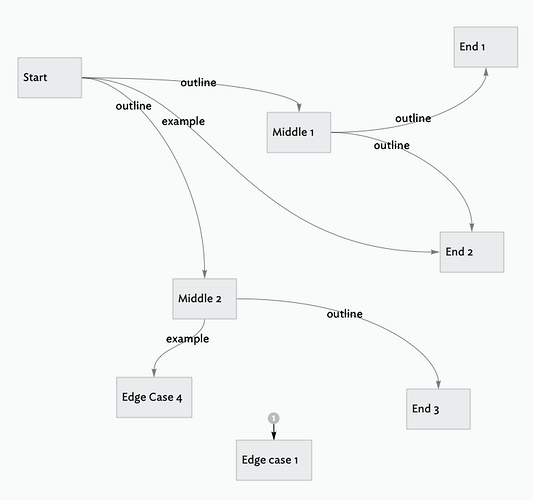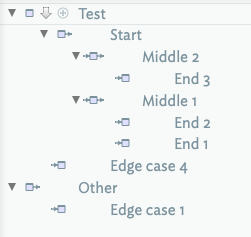Forum searches on the theme of convert map to outline do already harvest several hits, and I am struck (from a non-fiction perspective) that a tool which brings outlines and diagrams so productively close to each other appears to lack a well-worn (or technically facilitated) path from a directed acyclic graph (a tree of of text tiles and links, in which no note has more than one incoming link) to an outline (and back).
Perhaps this is not such a busy autoroute/freeway in fiction work ?
Perhaps literary graphs are typically cyclic, to some extent ?
As it happens, building tree structures which represent claims or arguments, flipping back and forth between graphic and outline representations of these, is the core of my work (underpinning key points with supporting points, spanning separate trees with logical connectives, and building on top of those conjunctions, choosing narrative/rhetorical routes, etc)
What is current best practice if one tries to do this in Tinderbox 8 ? (
Directed acyclic graphic representation ⇄ text outline
)
Forum discussions that I have seen appear to treat expressions of interest in map to outline conversions rather warily, as if counselling against departure from some other beaten track …
Re scripted routes to help with this:
In the JavaScript / Applescript interface, to which I turned by reflex, I can see no route to listing the outgoing and incoming links of a note (though we are offered counts of each).
Does it look feasible to equip the (osascript) scripting interface with something like an evaluate function through which it could harvest results from action code, e.g. evaluating link-related functions ?
Or perhaps to expose the incoming and outgoing links of notes (and the sources+targets) of those links ?
Rob




